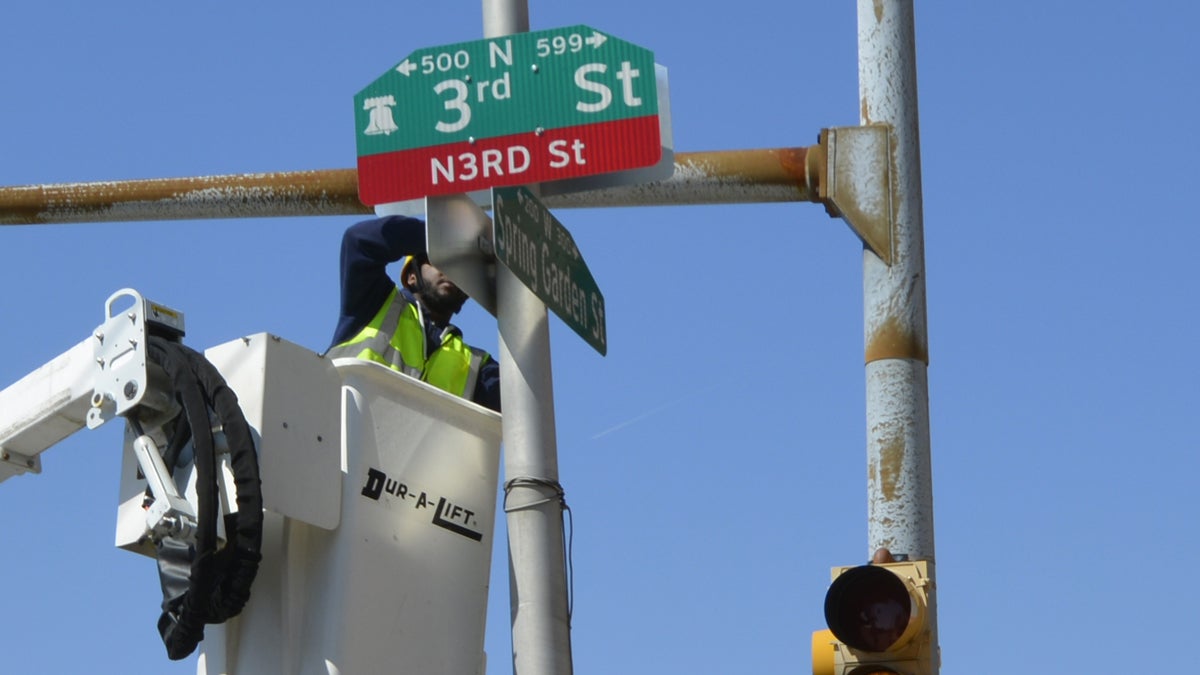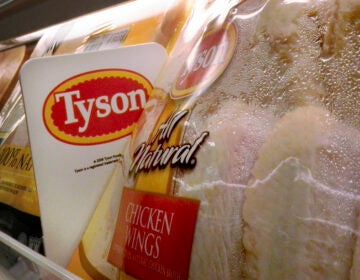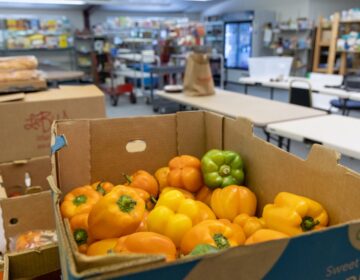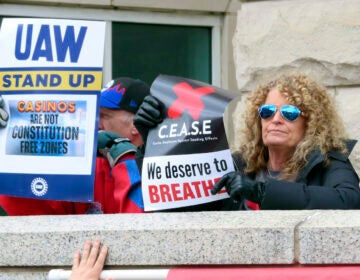On N3rd Street, neighborhood is the network uniting work and life

You’ve got networks in your office and maybe with people in similar workplaces around the city and beyond. But Alex Hillman, cofounder of the path-making Old City coworking space Indy Hall, sees a whole other network light up when he thinks about work: the network of neighbors in Old City.
Which may sound obvious — until you hear how Hillman sees those neighbors as the fabric of both social and business life.
A valuable nickname
In fact, that whole vibe has a name — “Nerd Street,” taken from the look of Indy Hall’s address sign. Hillman and colleagues had begun using it as a nickname for the various businesses, including creative, tech, and coworking spaces, that were populating the ‘hood. Then one day he saw the term on someone’s advertisement for an event in the area, and the next thing he knew, it was a thing and Mayor Nutter was using it.
“[Nutter] referred to it as part of the ecosystem that they’re part of in Philadelphia,” Hillman says, “but also that they had nothing to do with. Support from that level is what you want. You have the support, but they’re saying ‘This is yours.'”
And while the nickname has its charm, its value exceeds it catchiness.
“When I think of what the nickname’s value is,” Hillman says, “having been in Old City for a decade, I look around to often-changing but still fairly consistent culture there. I think there’s something that’s easy to miss if you don’t know to look for it. When Danny Harvith, who worked for Jarvus Innovations [in Old City], said we should make the nickname official, I said that if there’s a reason to do it, it’s to help people who wouldn’t otherwise know about it, know about it. To encourage people to look it up. Like, ‘Oh, there’s a community of people here who are nerds, and I’m a nerd for architecture or history or whatever, so I’ll look it up.'”
Authenticity of place
That sense of place — or place-ness, as I’m starting to think of it — is something many businesses try to create. But Hillman and his colleagues around the neighborhood gave it a new intentionality precisely because they didn’t separate out the professional and personal experiences of the blocks around his shop.
A great example? Indy Hall’s Adult Prom. “Like for those nerds who didn’t go to prom in high school,” he says. “My colleague Adam Teterus went around and knocked on doors of neighbors to connect and invite them. We work, we’re businesspeople, but we need to create time to get to know the people we want to do business with before we need to do business with them.”
So the business relationship isn’t the reason for the social relationship, but rather, the reverse. “Go out of your way to build those relationships before you need them — don’t wait till you’re panicked,” Hillman says. “Get rid of that desperation smell.”
That core relatedness is part of the vibrancy that’s leading Old City to become one of the most notable areas for development in Philadelphia, with new shops — including both national brands like CVS and one-of-a-kind stores and workspaces — going up or being renovated alongside a host of new residential buildings.
This urban development makes the breakdown of the old social-versus-workplace model even more timely and important for the neighborhood.
“The reality is that our neighborhoods are full of people we don’t know,” Hillman says. “So responding to the new development is more important than ever. As more people move in, some people get freaked out when a big brand like CVS comes in at 3rd and Market along with the larger new apartment buildings. But times like that are exactly when you want to know who your neighbors are. That’s what builds the culture of a place, not a brand.”
If you want a hand in a neighborhood’s direction, meet your neighbors
Old City certainly had its own place-ness before, with a recent history of art galleries and vendors that draw huge crowds for First Fridays and other fests. And while some OC denizens fear that the crowds and vendors may undercut that artistic ethos, Hillman flips that fear upside down into an opportunity, underlining how the festivals need to be part of a community already being intentionally developed in more everyday ways.
“If [shop or gallery owners] are waiting for a First Friday to get people in the door, it’s waiting too long,” he says. “Waiting for a marquee event is a mistake. It’s the little things that happen every day, like walking down the street and sticking your head in to say hello.
“To put it into a more concrete context, we run a gallery now, too. The fear of losing foot traffic to outside vendors is misplaced since you can get people to come in the door if you want people to come in the door. If people don’t know who you are, they lack a motivation to walk in the door anyway. These businesses don’t thrive on purely migrant foot traffic.”
In short, be pro-active: “If anyone’s worried about a change in the culture, the best thing you can do is go make a relationship with a neighborhood.”
That sounded like especially timely advice, as more and more attention comes to developing and supporting urban neighborhoods in Philly, and Hillman encourages that connectivity in the next steps in Old City District. People can too easily separate out the quality of life planning from the physical development in a place like Old City, but he sees them as interdependent. “The built space is a tool for the social space,” he says, “but if there is no social space, the built space is inanimate on its own. [The physical space] is the skeleton. The muscles are the social system, and they need to work together, need to be built together.”
It’s not rocket science. “You don’t need lots of money or studies to do that,” he says. “You need a study to adjust zoning, but you don’t need a study to do this.
In other words, “Mr. Rogers’ Neighborhood” got it right.
—
CORRECTION: In a previous version of this story, Danny Harvith’s name was misspelled.
WHYY is your source for fact-based, in-depth journalism and information. As a nonprofit organization, we rely on financial support from readers like you. Please give today.




